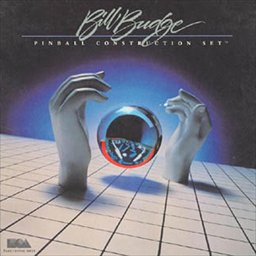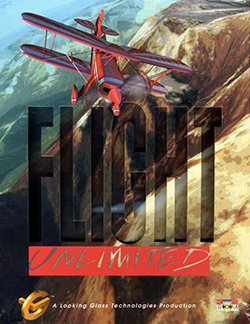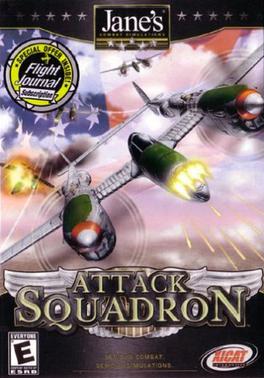
Maxis is an American video game developer and a division of Electronic Arts (EA). The studio was founded in 1987 by Will Wright and Jeff Braun, and acquired by Electronic Arts in 1997. Maxis is best known for its simulation games, including The Sims, Spore and SimCity.

Microsoft Flight Simulator is a series of flight simulator programs for MS-DOS, Classic Mac OS, and Microsoft Windows operating systems. It was an early product in the Microsoft application portfolio and differed significantly from Microsoft's other software, which was largely business-oriented. Microsoft Flight Simulator is Microsoft's longest-running software product line, predating Windows 1.0 by three years, and is one of the longest-running video game series of all time.

Electronic Arts Inc. (EA) is an American video game company headquartered in Redwood City, California. Founded in May 1982 by former Apple employee Trip Hawkins, the company was a pioneer of the early home computer game industry and promoted the designers and programmers responsible for its games as "software artists". EA published numerous games and some productivity software for personal computers, all of which were developed by external individuals or groups until 1987's Skate or Die! The company shifted toward internal game studios, often through acquisitions, such as Distinctive Software becoming EA Canada in 1991.

Pinball Construction Set is a video game by Bill Budge written for the Apple II. It was originally published in 1982 through Budge's own company, BudgeCo, then was released by Electronic Arts in 1983 along with ports to the Atari 8-bit computers and Commodore 64.

Looking Glass Studios, Inc. was an American video game developer based in Cambridge, Massachusetts. The company was founded by Paul Neurath with Ned Lerner as Blue Sky Productions in 1990, and merged with Lerner's Lerner Research in 1992 to become LookingGlass Technologies. Between 1997 and 1999, the company was part of Intermetrics and was renamed Looking Glass Studios. Following financial issues at Looking Glass, the studio shut down in May 2000.

Origin Systems, Inc. was an American video game developer based in Austin, Texas. It was founded on March 3, 1983, by Richard Garriott and his brother Robert. Origin is best known for their groundbreaking work in multiple genres of video games, such as the Ultima and Wing Commander series. The company was purchased by Electronic Arts in 1992.

Bullfrog Productions Limited was a British video game developer based in Guildford, England. Founded in 1987 by Peter Molyneux and Les Edgar, the company gained recognition in 1989 for their third release, Populous, and is also well known for titles such as Theme Park, Theme Hospital, Magic Carpet, Syndicate and Dungeon Keeper. Bullfrog's name was derived from an ornament in the offices of Edgar's and Molyneux's other enterprise, Taurus Impact Systems, Bullfrog's precursor where Molyneux and Edgar were developing business software. Bullfrog Productions was founded as a separate entity after Commodore mistook Taurus for a similarly named company.

Flight Unlimited is a 1995 aerobatic flight simulator video game developed and published by LookingGlass Technologies. It allows players to pilot reproductions of real-world aircraft and to perform aerobatic maneuvers. They may fly freely, race through floating rings against a timer or take lessons from a virtual flight instructor. The instructor teaches basic and advanced techniques, ranging from rudder turns to maneuvers such as the tailslide, Lomcovák and Immelmann turn.

Bill Budge is a retired American video game programmer and designer. He is best known for the Apple II games Raster Blaster (1981) and Pinball Construction Set (1983).

Skyfox is a combat flight simulation game developed by Ray Tobey for the Apple II and published by Electronic Arts in 1984. Ariolasoft published the game in Europe. It was released for the ZX Spectrum, Amstrad CPC, Commodore 64, and Macintosh in 1985, to the Amiga and Atari ST in 1986, and to the PC-88 in 1988.
Combat flight simulators are vehicle simulation games, amateur flight simulation computer programs used to simulate military aircraft and their operations. These are distinct from dedicated flight simulators used for professional pilot and military flight training which consist of realistic physical recreations of the actual aircraft cockpit, often with a full-motion platform.
Richard Hilleman is an American computer game and video game producer best known for his work creating the original Madden Football game for video game consoles for Electronic Arts. Apart from Madden, Hilleman was a key figure in building the massive EA Sports brand and has spent over 20 years working in product development at EA. He has directly or indirectly influenced a wide range of games and game designers.

Jane's Combat Simulations was a brand of combat flight simulators and naval warfare games published for DOS and Windows by Electronic Arts from 1995 to 2000, and later by other companies under license by Jane's Information Group. It is named after editor and publisher of military reference books Fred T. Jane.

Wing Commander is the first game in Chris Roberts' space flight simulation Wing Commander franchise by Origin Systems. The game was first released for MS-DOS on September 26, 1990, and was later ported to the Amiga, CD32 (256-color), Sega CD and the Super Nintendo Entertainment System, and re-released for the PC as Wing Commander I in 1994. An enhanced remake Super Wing Commander was made for the 3DO in 1994, and later ported to the Macintosh.
Joseph Ybarra is an American producer and designer of video games. He left Apple Computer in 1982 to work at the new Electronic Arts that was founded by his fellow ex-employee Trip Hawkins. He was the original producer of the first Madden NFL.

Budokan: The Martial Spirit is a fighting game published by Electronic Arts in 1989 for the Amiga and MS-DOS compatible operating systems. The game pits the player against other martial artists in a tournament known as the Budokan at the Nippon Budokan in Tokyo. Ports for the Sega Genesis, Commodore 64, ZX Spectrum, and Amstrad CPC were released in 1991.
Brent "Buzzboy" Iverson is a programmer best known as a simulations game developer. Among his credits are the PC DOS version of Chuck Yeager's Air Combat, LHX Attack Chopper, and Jane's US Navy Fighters, all published by Electronic Arts.

Jane's Attack Squadron is a 2002 combat flight simulator developed by Looking Glass Studios and Mad Doc Software and published by Xicat Interactive. Based on World War II, the game allows players to pilot fifteen reproductions of that era's military aircraft and to carry out missions for the Axis or Allies. Although it contains dogfights, the game focuses largely on air-to-ground combat, hence the title.

In video games, first-person is any graphical perspective rendered from the viewpoint of the player character, or from the inside of a device or vehicle controlled by the player character. It is one of two perspectives used in the vast majority of video games, with the other being third-person, the graphical perspective from outside of any character ; some games such as interactive fiction do not belong to either format.

Skyfox II: The Cygnus Conflict is a space combat computer game developed by Dynamix and published by Electronic Arts in 1987 for the Commodore 64 as a sequel to the original Skyfox for the Apple II. It was ported to the Amiga, Atari ST, and MS-DOS. The creator of Skyfox, Ray Tobey, was not involved in this game.















